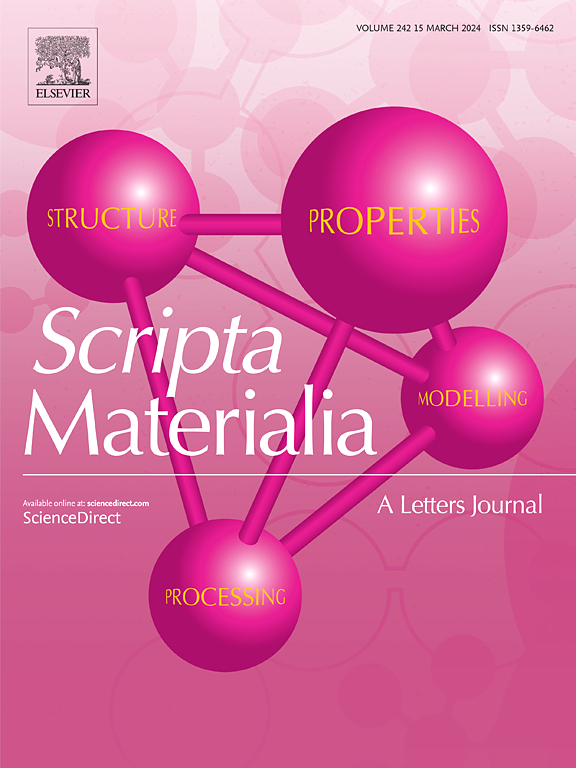同时,通过控制氧化物分布驱动的异质结构晶粒,提高钨的强度和延展性
IF 5.6
2区 材料科学
Q2 MATERIALS SCIENCE, MULTIDISCIPLINARY
引用次数: 0
摘要
长期以来,氧化物弥散增强W合金的性能优化主要集中在单一氧化物调控上,而忽略了多氧化物协同作用和晶粒结构设计。本文突破了传统的均匀色散强化范式,通过不同氧化物的空间选择性分布构建了非均质晶粒结构,从而解决了强度与延性的权衡问题。首先,在热力学计算的指导下,我们系统地评估了W中各种氧化物的稳态特性,然后确定了适合于晶内强化(HfO2)和晶界稳定(La2O3)的氧化物。随后,通过复合粉末混合策略,我们在W中构建了非均质晶粒结构,其中一部分W晶粒被均匀分散的HfO2纳米颗粒强化,而其余的W晶粒保持相对柔软和无分散。与传统的W-La2O3合金相比,在200℃下,W-La2O3- hfo2合金的强度提高了33%,延展性提高了57%,为高性能难熔金属的制造提供了新的方向。本文章由计算机程序翻译,如有差异,请以英文原文为准。

Simultaneously enhancing the strength and ductility of W through heterostructured grains driven by controllable oxide distributions
All long, performance optimization in oxide dispersion-strengthened W alloys has predominantly focused on monolithic oxide regulation, neglecting multi-oxide synergy and grain structure design. This paper breaks away from the traditional homogeneous dispersion strengthening paradigm and constructs heterogeneous grain structure through spatially selective distribution of different oxides, thereby resolving the strength-ductility trade-offs. First, guided by thermodynamic calculations, we systematically evaluate the steady-state characteristics of various oxides in W and then identify oxides suitable for intragranular strengthening (HfO2) and grain boundary stabilization (La2O3). Subsequently, through a composite powder blending strategy, we construct a heterogeneous grain structure in W, where a portion of W grains are strengthened by uniformly dispersed HfO2 nanoparticles, while the remaining remain relatively soft and dispersoid-free. Compared to conventional W-La2O3 alloy, the W-La2O3-HfO2 alloy we developed yields a 33% increase in strength and 57% increase in ductility at 200°C, providing a new direction for fabricating high-performance refractory metals.
求助全文
通过发布文献求助,成功后即可免费获取论文全文。
去求助
来源期刊

Scripta Materialia
工程技术-材料科学:综合
CiteScore
11.40
自引率
5.00%
发文量
581
审稿时长
34 days
期刊介绍:
Scripta Materialia is a LETTERS journal of Acta Materialia, providing a forum for the rapid publication of short communications on the relationship between the structure and the properties of inorganic materials. The emphasis is on originality rather than incremental research. Short reports on the development of materials with novel or substantially improved properties are also welcomed. Emphasis is on either the functional or mechanical behavior of metals, ceramics and semiconductors at all length scales.
 求助内容:
求助内容: 应助结果提醒方式:
应助结果提醒方式:


